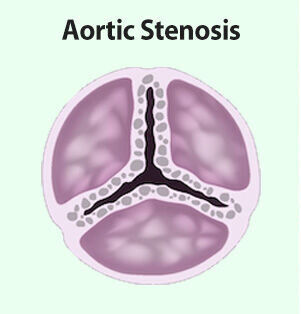Surgeon Q&A Follow-Up: 3 Questions About Radiation Associated Heart Valve Disease
Written By: Adam Pick, Patient Advocate, Author & Website Founder
Medical Expert: Douglas Johnston, MD, Chief of Cardiac Surgery at Northwestern Medicine
Page last updated: July 28, 2023
In response to our new post about radiation therapy associated heart valve disease with Dr. Douglas Johnston, I just received three, important follow-up questions from Christine.

In her email, Christine wrote to me, “Dear Adam, I read your interview with Dr. Johnston with great interest as I had radiation for cancer treatment in the 1970s because of Hodgkin’s lymphoma. In July 2022, my aortic valve was replaced due to advanced aortic stenosis. Due to a porcelain aorta in the mediastinal area, the valve was inserted using a TAVR since normal surgery was considered too risky. Unfortunately, the mitral valve also now shows calcifications on the valve ring. One hopes that this situation may improve. In principle, I’m doing quite well although I’ve become cautious and avoid great efforts. My questions are:
- Can a TAVR of the aortic valve be repeated?
- Is it possible to also replace the mitral valve in an emergency?
- The new valve does not fit 100% and there is a small leak. It is hoped that this will close over time. Is it possible to get a statement on previous experiences? What can be done to stop this leak from getting bigger?”
Christine is asking several great questions. So, I wanted to provide Christine several great answers. That said, I immediately forwarded Christine’s questions to Dr. Johnston. Within minutes, Dr. Johnston had reviewed and sent me answers to Christine’s questions via email.
Question #1: Can a TAVR of the aortic valve be repeated?
In response to the question, “Can a TAVR of the aortic valve be repeated?”, Dr. Johnston stated:
This can be repeated if the original valve is big enough for a new valve to be placed inside it while leaving enough are for blood to exit the heart. It does not sound like the TAVR needs to be repeated at this point given it is so new.
Question #2: Is it possible to replace the mitral valve in an emergency?
In response to the question, “Is it possible to also replace the mitral valve in an emergency?”, Dr. Johnston stated:
There are some transcatheter mitral valve replacement (TMVR) devices in clinical trials, all of which are very dependent on the anatomy of the valve. In many case of radiation heart disease, the location and extent of calcium may mean that it isn’t possible to place a transcatheter mitral valve successfully. In any case, these decisions should be made carefully and electively with a heart team experienced in treating radiation patients rather than as an emergency.
Question #3: What can be done to stop paravalvular leak?
In response to the question, “What can be done to stop a TAVR leak from getting bigger?”
Some paravalvular leaks do get smaller over time, but it very much depends on the shape of the original valve and where the calcium is. Most patients will tolerate a small leak as long as the valve is otherwise working well. If the mitral valve is getting worse, consideration should be given to replacing both valves surgically. With a porcelain aorta, the ascending aorta can be replaced as part of the COMMANDO operation. We have done quite a few of these operations and they can be done with good safety if the patient is otherwise well.
Thanks Christine & Dr. Johnston
Many thanks to Christine for her questions and a special thanks to Dr. Doug Johnston for sharing his clinical experiences and research with our community!
Related Links:
Keep on tickin!
Adam














